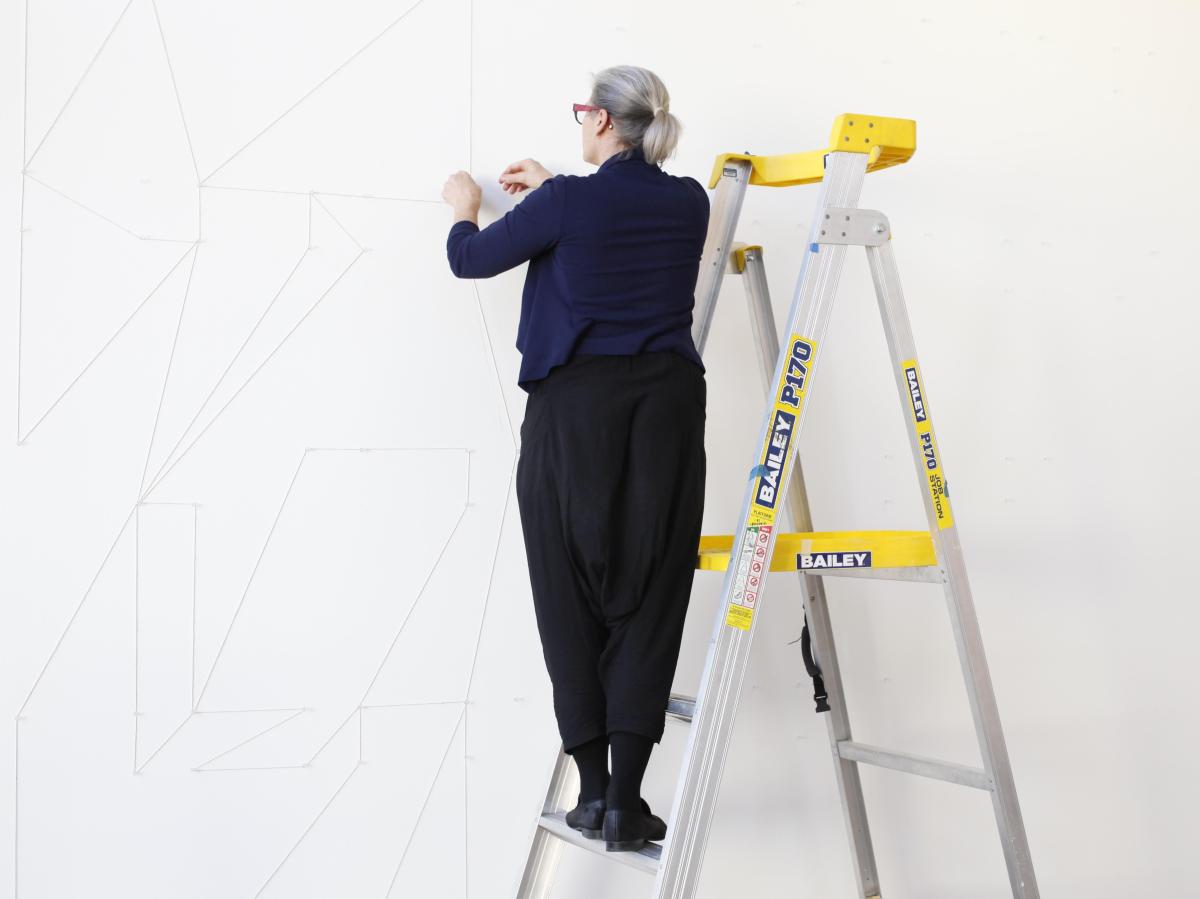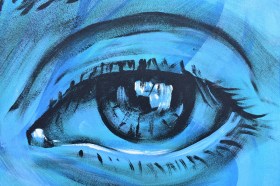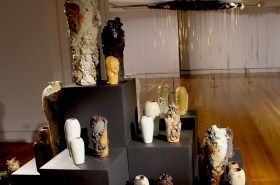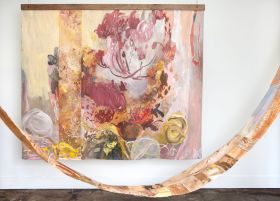The Drawing Exchange, Rayner Hoff Project Space 2017. Photo: Steven Cavanagh
Globally, post-graduate doctoral studies are on the rise. This has resulted in a competitive and expanding labour market for academics and research fellows at universities, particularly in the STEM disciplines. Australia is in the thick of this trend.
Parallel to that rise has been the more recent recognition of practice-based, research-led doctoral degrees in the visual arts. It is a significant turn-around that places professional artists on equal footing with other career disciplines.
A new option in the doctoral market is the National Art School’s (NAS) Doctor of Fine Art (DFA) program. It is the first non-university arts doctorate offered in Australia and the only professional, practice-based arts doctorate in Sydney.
Head of Studies at NAS, Simon Cooper told ArtsHub: ‘A doctorate qualification has increasingly become popular – it is almost the standard now, especially for those artists with an ambition to teach. Our goal, however, is to maintain the professional orientation of the school, guiding candidates towards outcomes to be a professional artist.’
Offered as a three-year full-time, or six-year part-time degree, the DFA is tailored towards practicing artists who wish to pursue their individual research interests, refine their studio practice, and work towards developing their professional artistic careers.
‘There is a scholarly dimension,’ Cooper said, ‘but the DFA has been designed to refine both research and practice – one isn’t subordinate to the other. That research activity is a means to an end to develop a major body of work. It will be quite demanding in that regard.’
The School’s Doctor of Fine Art will commence its inaugural intake in July 2018.
Understanding which is the right Doctorate for you
Whether you want to track towards an academic career or deepen and extend your practice as a professional artist, that end goal will have a significant impact on the doctoral program you choose.
‘When artists finish their Master of Fine Art and go out into the world, they soon realise it’s only then that the serious questions start to emerge in their work through prolonged practice. That is what the doctorate space is for – to deal with some of those questions,’ said Cooper.
The School’s DFA can deliver that intense period of reflection, which should sustain the candidate through to the final, advanced stage of their career. ‘It is a chance to give that career the rigour it might need – to refill the tank,’ Cooper added.
What you need to apply
Admission to the School’s DFA program is based on academic merit, portfolio and interview.
Cooper said that they expect to see applicants with existing qualifications, such as a Master of Fine Art (MFA) or international equivalent, but added that the School has maintained some scope for alternate entry pathways for very established artists who may not hold an MFA.
He added that a solid proposal for a research project is essential. ‘It doesn’t have to be so defined that you will be signing a contract in blood, but it needs to be a project with some focused goals and outcomes.
‘We also expect to see some commitment to professional practice,’ he said.
Learn more about NAS’s Doctorate program.
Candidates will have two supervisors: a principal supervisor assigned through consultation with the appropriate head of department at NAS, and an associate supervisor with specialist knowledge in the area of research.
Cooper said there is capacity to bring in external supervisors if required, but that the primary supervisor is to be sourced within the school.
‘NAS has a bit of a reputation for holding an anti-academic studio-only position, but in truth, the quality of staff is very high – there is a surprisingly high percentage of staff that hold Doctoral qualifications, making NAS well situated for offering the DFA program,’ he said.
‘We are bound by the same regulatory standards as the university sector; however, it is significant for us to offer this program because it makes a statement about the School’s ambition and independence. It is about making sure we are creating an institution that has that the breadth and depth of scholarship, and that is a benefit for the entire School community.’
What you will be required to deliver
The National Art School’s DFA requires the successful completion and presentation of a significant body of artworks that represent an original contribution to knowledge and professional expertise in the field of visual art studio practice.
Essentially, it’s like putting on a major solo show, Cooper explained.
It is to be accompanied by a 20,000 – 40,000 word text in the form of an exegesis that critically contextualises the studio work within the project’s field of research. Together, these two components comprise the research outcome or ‘thesis’.
Also key to this DFA’s delivery is participation in the Studio Seminar. It complements the studio specialisation with regular symposia, seminars and presentations that provide a communal academic environment for critical reflection and scholarly engagement.
Cooper said that while this might be more common at a MFA level than a traditional PhD program, NAS sees its value at a doctorate level also.
‘You don’t just want to go down your own rabbit hole in isolation in the studio; it can be an important opportunity to engage with others and put their practice and ideas up for examination by colleagues,’ he explained.
‘We are living in an age where information is super accessible, but how does one filter what is relevant to one’s own practice? The seminar component provides that place where current issues are debated in relation to the studio research.’
The DFA has been accredited by the Australian Government’s Tertiary Education Quality and Standards Agency (TEQSA).
The National Art School is accepting applications for its Doctor of Fine Art, commencing July 2018. The school is located in Darlinghurst, Sydney. For details visit www.nas.edu.au/study/doctor-fine-art/.





